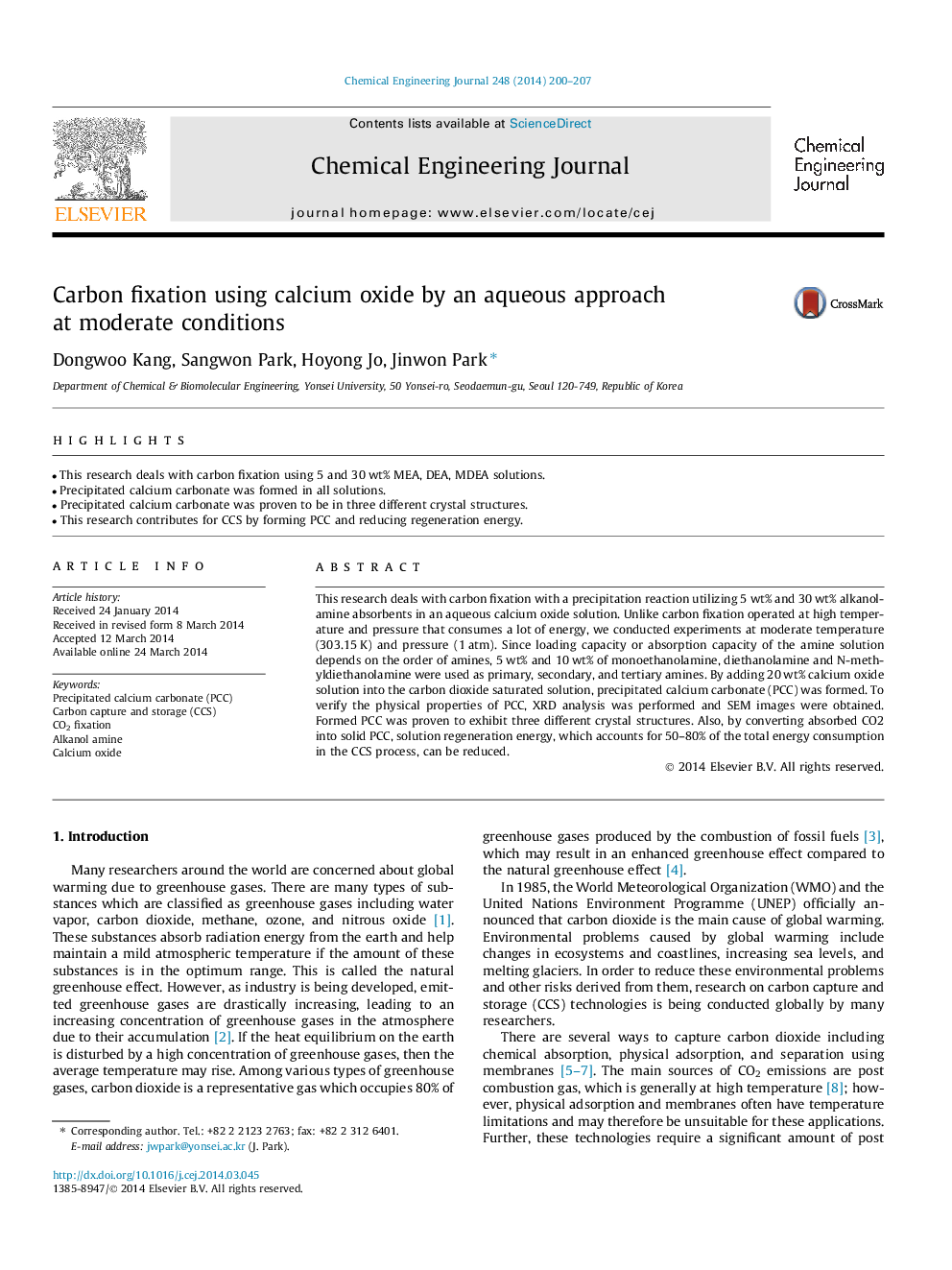| Article ID | Journal | Published Year | Pages | File Type |
|---|---|---|---|---|
| 147487 | Chemical Engineering Journal | 2014 | 8 Pages |
•This research deals with carbon fixation using 5 and 30 wt% MEA, DEA, MDEA solutions.•Precipitated calcium carbonate was formed in all solutions.•Precipitated calcium carbonate was proven to be in three different crystal structures.•This research contributes for CCS by forming PCC and reducing regeneration energy.
This research deals with carbon fixation with a precipitation reaction utilizing 5 wt% and 30 wt% alkanolamine absorbents in an aqueous calcium oxide solution. Unlike carbon fixation operated at high temperature and pressure that consumes a lot of energy, we conducted experiments at moderate temperature (303.15 K) and pressure (1 atm). Since loading capacity or absorption capacity of the amine solution depends on the order of amines, 5 wt% and 10 wt% of monoethanolamine, diethanolamine and N-methyldiethanolamine were used as primary, secondary, and tertiary amines. By adding 20 wt% calcium oxide solution into the carbon dioxide saturated solution, precipitated calcium carbonate (PCC) was formed. To verify the physical properties of PCC, XRD analysis was performed and SEM images were obtained. Formed PCC was proven to exhibit three different crystal structures. Also, by converting absorbed CO2 into solid PCC, solution regeneration energy, which accounts for 50–80% of the total energy consumption in the CCS process, can be reduced.
